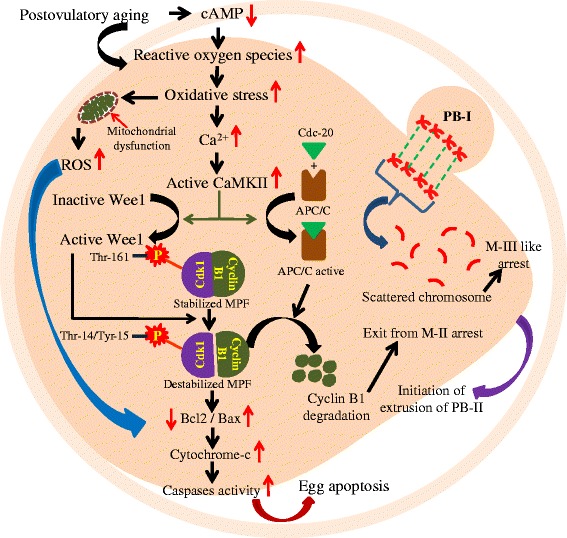Fig. 1.

A schematic diagram showing the molecular changes associated with postovulatory aging-induced abortive SEA. Postovulatory egg aging reduces cAMP and/or induces generation of ROS that results in oxidative stress. The oxidative stress impairs mitochondrial membrane potential and increases cytosolic free Ca2+ level. The increased cytosolic free Ca2+ level results in the activation of Wee1 and APC/C. Wee1 modulates Cdk1 phosphorylation and destabilizes MPF heterodimer. The active APC/C triggers cyclin B1 degradation through ubiquitin-mediated proteolysis. The destabilized MPF triggers an exit from M-II arrest but chromosomes are scattered in the cytoplasm and pronuclei is not formed. The increased level of ROS and/or sustained destabilized MPF may trigger proapoptotic as well as apoptotic factors leading to apoptosis in aged eggs. Increased cAMP level and decreased Ca 2+ and ROS levels using specific drugs could be beneficial to prevent postovulatory aging-induced deterioration of egg quality
